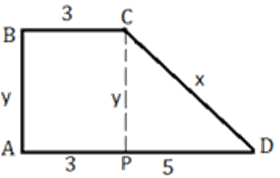Questions 45 to 66 carry 3 marks each
Q. 1.
The average weight of students in a class increases by 600 gm when some new students join the class.
If the average weight of the new students is 3 kg more than the average weight of the original students, then the ratio of the number of original students to the number of new students is
- A).
1:4
- B).
3:1
- C).
1:2
- D).
4:1



